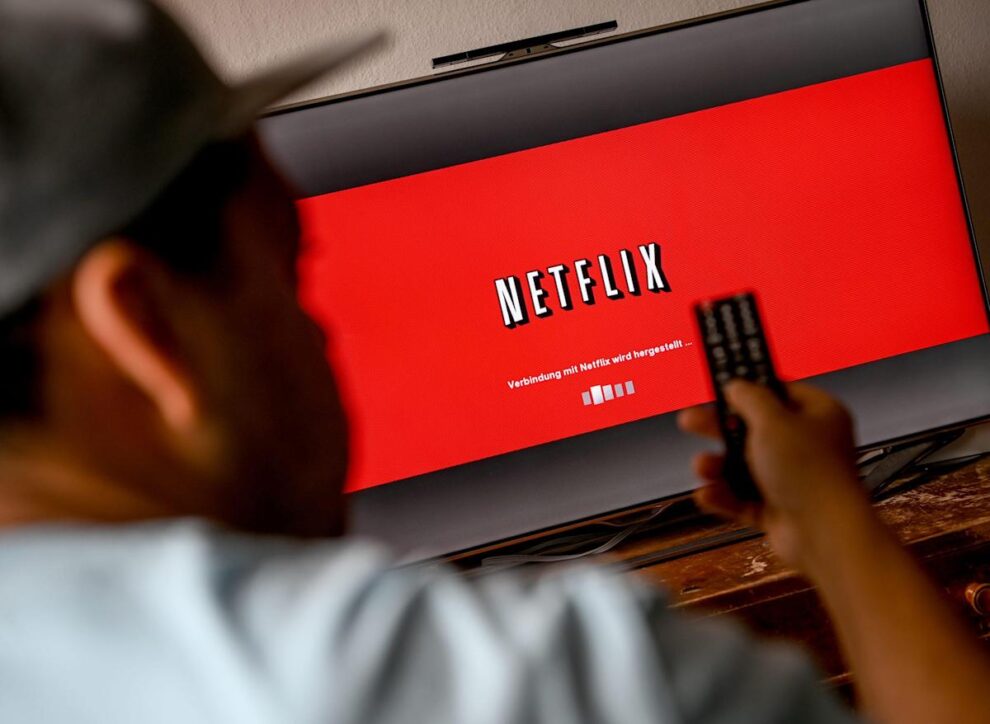
Just like everyone else this January, the stock market has the Omicron blues.
Several “at-home” stocks, including Peloton and Netflix got crushed this week, amid reports of slipping demand and lower-than-anticipated performance. Meanwhile, the Nasdaq closed dow on Wednesday and fell deeper into correction territory on Friday when it dropped 2.7%—marking its worst week since 2020.
It shows that the stock market is reassessing how to value the companies that cater to people putting up with COVID quarantines and reduced socializing amid high caseloads.
Netflix tumbled more than 24% on Friday after the streaming service acknowledged it only added 8.3 million net new subscribers last quarter, missing expectations. Company executives piled onto the bad news by seemingly admitting that the growing competition in the streaming space may be taking a toll.
“When we look at the data on a competitive impact, there may be some kind of more, on the marginal kind of side of our growth, some impact from competition,” Netflix CFO Spencer Neumann said on Thursday’s earnings call with analysts.
Shares of Disney, parent of the major Netflix competitor Disney+, were down more than 7% on Friday morning, while Discovery and ViacomCBS stock prices also slipped.
The streaming stock hits come after Peloton stock fell 24% on Thursday after CNBC reported the fitness product company was planning to halt production of its bikes and treadmills as demand slipped. By Friday, though, the stock had recovered somewhat after Pelton’s leaders denied plans to pause manufacturing, yet admitted considering layoffs.
But there’s a silver lining to all this pain in equity markets.
In some ways, it’s a sign of hope. There’s likely some optimism that the pandemic is moving into endemic mode as Omicron infections and hospitalizations wane. In that regard, the stock market is at odds with the public health experts warning that the U.S. is still in the thick of it, with Dr. Anthony Fauci even saying earlier this week that Americans were still in the first of a five-stage pandemic.
But there’s also a bigger, broader story going on in terms of the market, Schwab’s Chief Investment Strategist Liz Ann Sonders told Fortune.
This week’s wild ride is part of a broader trend
The question coming off Friday’s rocky performance of at-home stocks seems to be whether or not investors are still good with pandemic-related stocks. Or is the ride officially over?
“The latest bout of where selling has been concentrated is those stay-at-home stocks, but it’s not sort of a one-off thing happening solely tied to the virus,” Sonders says. Much of the interest is now in the “rearview mirror” when it comes to the highly speculative, low-quality meme stocks, non-profitable tech stocks, zombie companies, bankruptcy stocks and even weak-balance sheet companies that really came into vogue in the first couple of months of last year.
All of those sectors and individual stock have had their turn of “taking it on the chin,” Sonders says, and the hyped, perhaps even overhyped, at-home stocks now in the hot seat. “These stocks are now taking their turn in terms of being sold in an otherwise more treacherous environment that we’re in much more broadly,” she says. “The low-quality, kind of junkier parts of the market—even if they find trading lifts from time to time—I think are decidedly not where you want to be.”
That’s especially true given the impact of the Fed’s decision to dramatically cut down the amount of bonds it buys each month and its signaling of plans for multiple interest rate hikes this year.
“In any cycle when you go from very loose monetary policy on the way to tight monetary policy, that is almost always a gamechanger for the market in terms of volatility, in terms of leadership shifts—and it’s no different this time,” Sonders says, adding that the Fed’s moves have certainly spurred a “re-rating” of what’s considered high-value.
Where does that leave at-home stocks like the streaming sector?
Bank of America Research analysts wrote Friday that while Netflix’s end-of-year results are “thesis-shaking,” a selloff is likely “overdone” in the long term. Analysts blamed the recent volatility on the “unmitigated disaster” by Netflix to meet its guidance.
In recent earnings seasons, stocks that haven’t met expectations have gotten hit disproportionately hard relative to the stocks that have met expectations and have rallied based on the strength that they’ve displayed, Sonders says. Netflix’s performance follows this trend.
But the BofA team led by Nat Schindler wrote that Netflix, as well as the broader streaming sector, is facing a number of substantial headwinds. The company’s disappointing guidance for the upcoming quarter was “without a doubt an unmitigated disaster,” they wrote, on top of which it faces mounting competition.
“We see this Netflix quarter as a worrying datapoint for the rest of the streaming industry on multiple fronts,” MoffettNathanson analyst Michael Nathanson said in a brief Friday. “Over the course of the past few months, Netflix’s stock price has declined from $700 to $400, which obviously makes it much harder to drive the models for Disney, ViacomCBS or Discovery.”
A separate BofA team, led by Jessica Reif Ehrlich, said they believe consumers “will only subscribe to a limited number of services” and it appears the U.S. is “approaching peak penetration levels.” In other words, there are no more people in lockdown left to sign up to new streaming services.
This, of course, likely sets the stage this year for more constrained profit margins and pricing power, which could kick off the long-anticipated consolidation in the streaming space. BofA is betting that Amazon, Netflix, Disney+ and Discovery will retain their top-tier positions, but everything else is seemingly up for grabs.
The market senses the end of the pandemic around the corner, and that means less streaming services will survive when it’s over.
This story was originally featured on Fortune.com











Add Comment